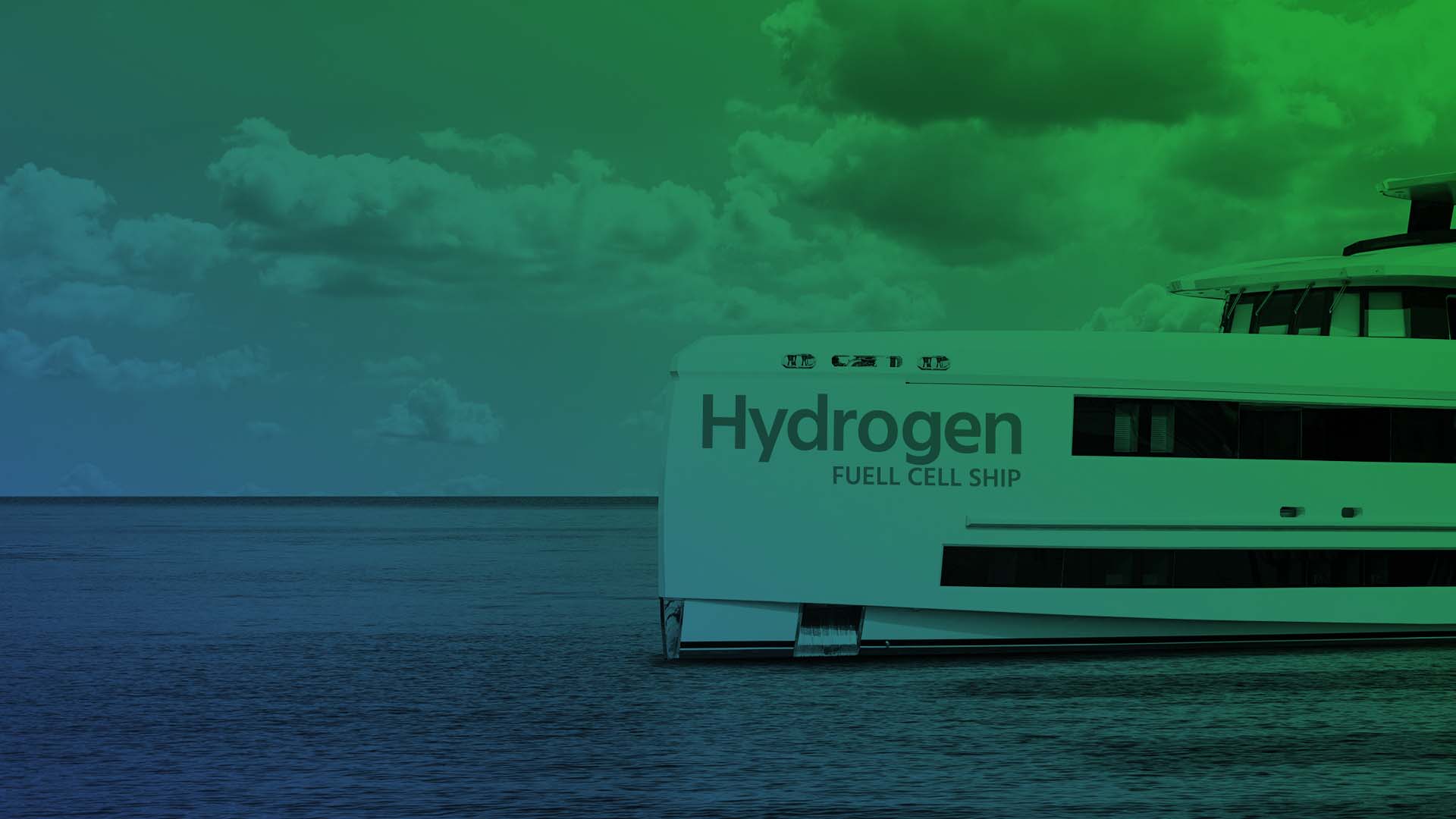Zero Emission Marine
EcoEnergyH2
Synergy of hydrogen energy technology areas

The transport of hydrogen in large volumes will become increasingly important in the coming years due to its growing popularity in road transport and as a fuel for shipping.
Zero Emission Marine – is our own proprietary program for the development of zero-emission water transport EcoEnergyH2 SHIPS, i.e. the construction of two hydrogen-powered ships (based on green hydrogen and fuel cells (blue hydrogen)) as commercial ships with zero hydrogen fuel cell emissions [e.g. from the EU research and innovation program Horizon 2020 as part of the Joint Undertaking for Fuel Cells and Hydrogen].
This is a project aimed at demonstrating the unique features of hydrogen fuel cells in the marine sector: lower CO2 and pollution and noise reduction. The project will work with certification bodies to accelerate the introduction of hydrogen into the maritime sector, both for inland and coastal operations and for freight and passenger transport.
This innovative project will be an important next step in proving the viability of marine fuel cell technology and illustrating its business viability. It will enable port-scale and near-port integration of land and sea systems, which should also demonstrate cost reductions for marine fuel cell power systems.
Under the Zero Emission Water Transport Partnership platform, the maritime sector is to receive support of EUR 530 million between 2021 and 2027 to be used to accelerate research and development towards zero emission water transport.
The following projects inspire us:
1/ Construction of an aluminum structure vessel with a catamaran hull for passenger/cruise traffic within the port
With the use of liquid hydrogen fuel cell technology as a significant contribution to reducing CO emissionsշ in seaside resorts and health resorts. The project aims to demonstrate that fuel cells are a practical and feasible propulsion solution for owners and builders of medium-sized ships carrying more than 100 passengers or an equivalent amount of cargo in inland or coastal shipping. The operational impact of using hydrogen as a fuel will also be assessed.
2/ Construction of a small passenger and cargo ferry for coastal navigation
As part of the strategy of the “clean hydrogen” and “energy system of the future” investment programmes [announced by the European Commission in early July 2020], using a 6MW hydrogen power supply and propulsion system and an installation [e.g. manufactured by ABB or with a leading supplier of innovative fuel cell and clean energy solutions – Ballard Power Systems Europe], enabling the use of 400 kW fuel cells to power ships as a system integrating mainly generators, switchgears, converters, engine and control system.
Powering coastal transport sustainably, as well as reducing emissions on inland waterways, especially within city boundaries, is a new kind of challenge that has become a necessity.
3/ Development of the concept of an aluminum construction of a port and coastal cruise catamaran
Powered by hydrogen obtained through the electrolysis of water using only renewable energy from autonomous sources installed on the boat, i.e. solar panels and wind-powered generators.
Hydrogen propulsion is an ecological alternative to sea transport. The only side effect of its use is water, so mass use of this type of propulsion would drastically reduce pollution and greenhouse gas emissions.
The planned vessel is a 30-meter-long catamaran with a top speed of 22 knots and capacity for about 90 passengers. The vessel will be equipped with dual electric motors, fuel cells and a battery pack. The Hexagon composite hydrogen tanks will contain enough hydrogen to operate the vessel for up to two days between refuelings.
4/ Project of an electric sea vessel that uses hydrogen fuel cells for power supply
Fuel cells are a clean source of electricity – they use hydrogen and produce no exhaust fumes, so such a vessel does not expose ecosystems to contamination.
Hydrogen cannot contaminate water because it is even lighter than helium, so in the event of a leak it rises and escapes – even from the atmosphere, straight into space. If hydrogen leaks, it will not only remove itself from the environment, but it will even disappear from the planet. Fuel cells only produce water, but water so pure that it can be drunk or used for scientific research. This significantly reduces the need to use seawater desalination plants, which consume a lot of energy.
As part of this project, a small hydrogen-powered passenger ferry will be built, which would sail on the waters of the Bay of Szczecin or Puck.
In addition to proving that it is technically possible to power a real ship with hydrogen fuel cells, the project will demonstrate that it is economically viable for the maritime market to use a hydrogen fuel cell propulsion system.
The project assumes 120-150 passengers and a range of about 75 km. The ship should reach speeds of up to 35 knots (about 60 km/h). The ship should be refueled every 120-150 km. The planned range is about 3600 km – that is 15 days without refueling. This design requires special hydrogen tanks.
The potential of technological synergy
EcoEnergyH2
Seawater electrolysis. Purchase of natural gas for own production needs. Energy production in an underground pumped-storage power plant.
The implementation of industrial-scale hydrogen production in the process of pyrolysis of natural gas together with the production of graphite will ultimately lead to its production in an emission-free process.
This is a process involving the liquefaction, compression and expansion of hydrogen in order to directly inject hydrogen into underground storage.
The transport of hydrogen in large volumes will become increasingly important in the coming years due to its growing popularity in road transport and as a fuel for shipping.
The transport of hydrogen in large volumes will become increasingly important in the coming years due to its growing popularity in road transport and as a fuel for shipping.
